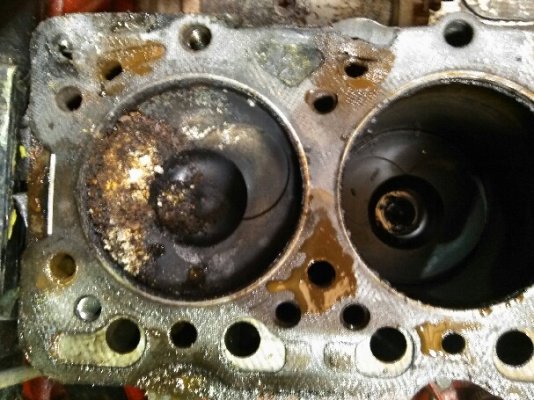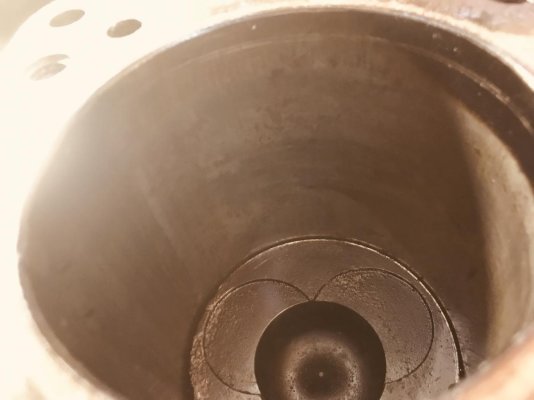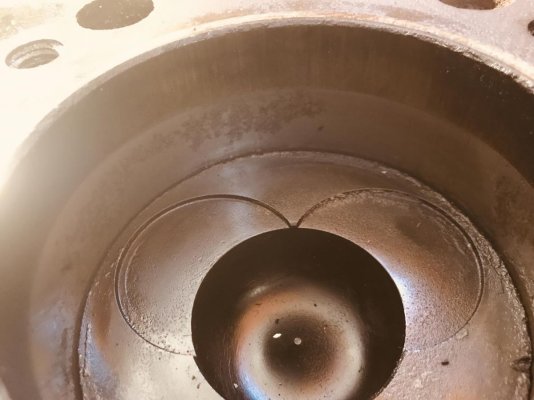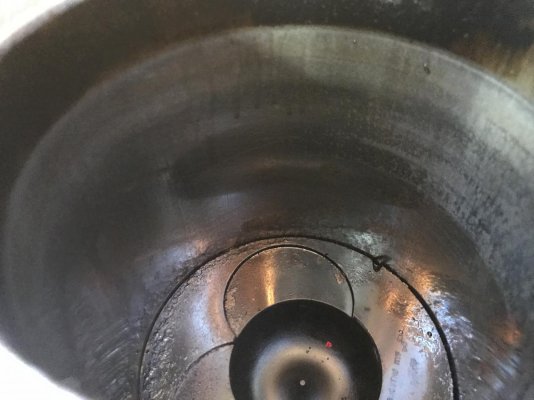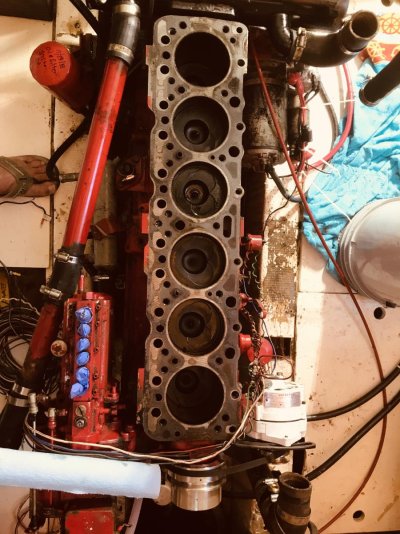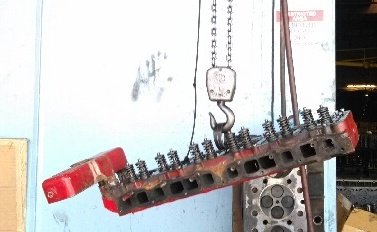warfdog
Veteran Member
- Joined
- May 21, 2018
- Messages
- 96
- Location
- USA
- Vessel Name
- Voyager
- Vessel Make
- Universal 39' Europa Trawler
Update to the drama and what I hope is good news.
#6 Cylinder broke free after carefully soaking in Kroil and gentle scraping and cleaning with a shop vac - bore looks pretty good to me, only issue I see is pitting on the top of the piston (2nd attachment). Getting it to move was not hard with a coupled of bumps on the starter followed by repeating wiping down and spraying the groove in the cylinder wall with oil.
Engine spins over very easily. There was a little aluminum oxide showing on the #6 cylinder wall but no gouges. As the piston moved I cleaned the oxide on the wall constantly. It took about 2 minutes to completely clean it and get it to move freely. (Cylinder damage to the skirt is possible ??)
In fact Cylinders #5-4-3-2-1 don't look any different than #6 Now (3rd-4th attachments for example).
Head is off and at American Cylinder Heads in Oakland CA American Cylinder Head Inc - Cylinder Head Sales and Repair (they do lots of boat and truck heads and will check for cracks and recondition it as needed for about $500). The last photo is not very clear but you can see the water damage on #6 exhaust port - hope we don't find any cracks.
I'm a bit concerned about the manifold as well. I'll need to clean it up and see what it looks like. Any after market manifolds available?
Maybe with a moderate honing the cylinders can be acceptable after checking for roundness. Can the pitting on the #6 piston cause problems - should it be ground or sanded smooth, or better left alone? What are the chances that the damaged piston causing havoc later?
By the way did you know that spinning the motor will pump a bunch of oil up the passages to the head and blow diesel fuel from the lift pump in your left ear?
I'll let my mechanic take the ball from here but any advice is appreciated. I'll be calling Brian at ADC up for supplies on Monday. He's been helpful so far by phone but not responding yet to my emails.
Thanks all,
Cap'n Warfdog (Joe)
#6 Cylinder broke free after carefully soaking in Kroil and gentle scraping and cleaning with a shop vac - bore looks pretty good to me, only issue I see is pitting on the top of the piston (2nd attachment). Getting it to move was not hard with a coupled of bumps on the starter followed by repeating wiping down and spraying the groove in the cylinder wall with oil.
Engine spins over very easily. There was a little aluminum oxide showing on the #6 cylinder wall but no gouges. As the piston moved I cleaned the oxide on the wall constantly. It took about 2 minutes to completely clean it and get it to move freely. (Cylinder damage to the skirt is possible ??)
In fact Cylinders #5-4-3-2-1 don't look any different than #6 Now (3rd-4th attachments for example).
Head is off and at American Cylinder Heads in Oakland CA American Cylinder Head Inc - Cylinder Head Sales and Repair (they do lots of boat and truck heads and will check for cracks and recondition it as needed for about $500). The last photo is not very clear but you can see the water damage on #6 exhaust port - hope we don't find any cracks.
I'm a bit concerned about the manifold as well. I'll need to clean it up and see what it looks like. Any after market manifolds available?
Maybe with a moderate honing the cylinders can be acceptable after checking for roundness. Can the pitting on the #6 piston cause problems - should it be ground or sanded smooth, or better left alone? What are the chances that the damaged piston causing havoc later?
By the way did you know that spinning the motor will pump a bunch of oil up the passages to the head and blow diesel fuel from the lift pump in your left ear?
I'll let my mechanic take the ball from here but any advice is appreciated. I'll be calling Brian at ADC up for supplies on Monday. He's been helpful so far by phone but not responding yet to my emails.
Thanks all,
Cap'n Warfdog (Joe)
Attachments
Last edited:

